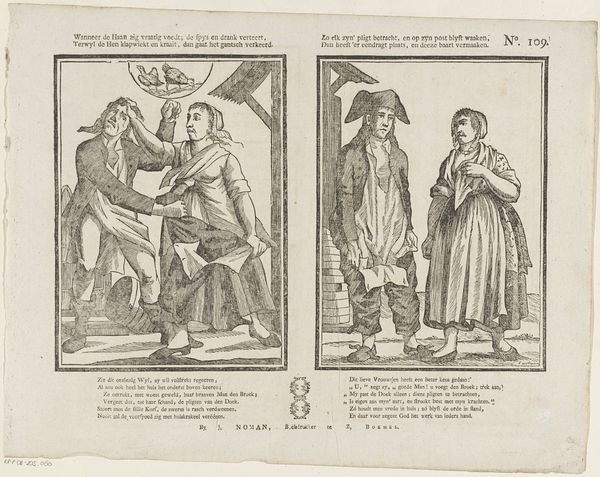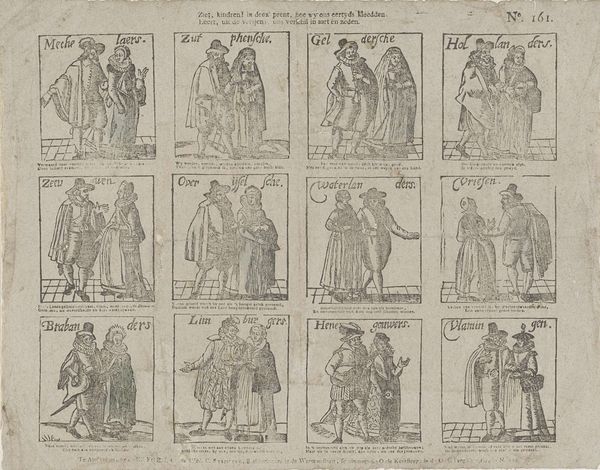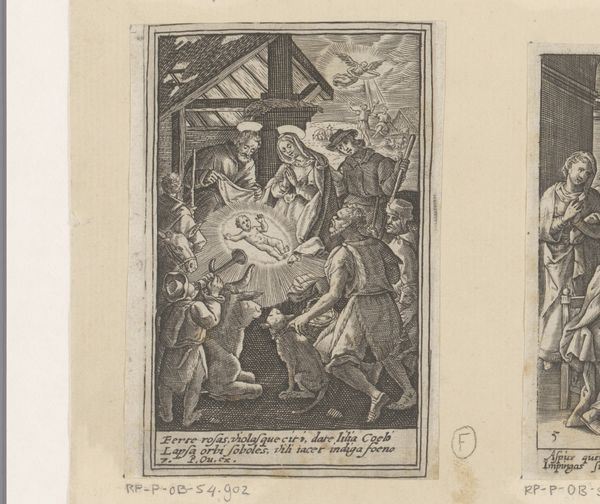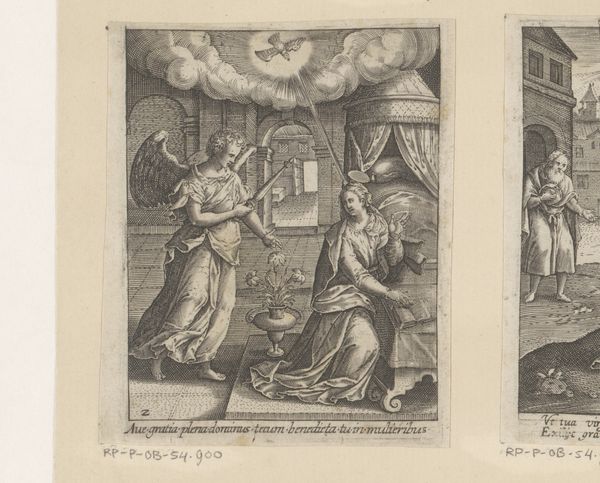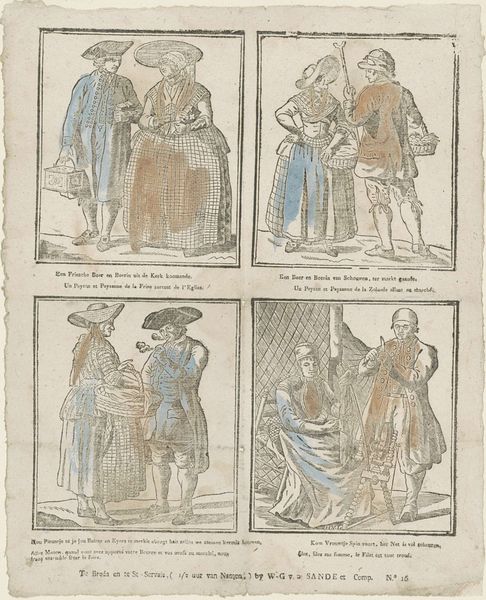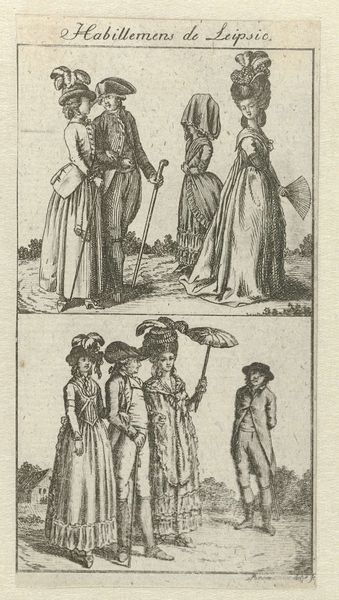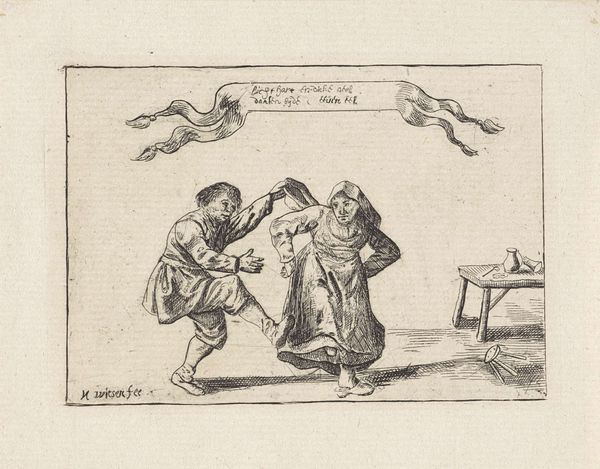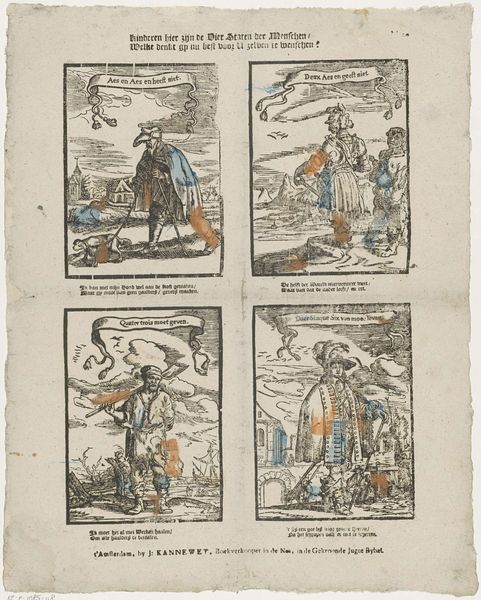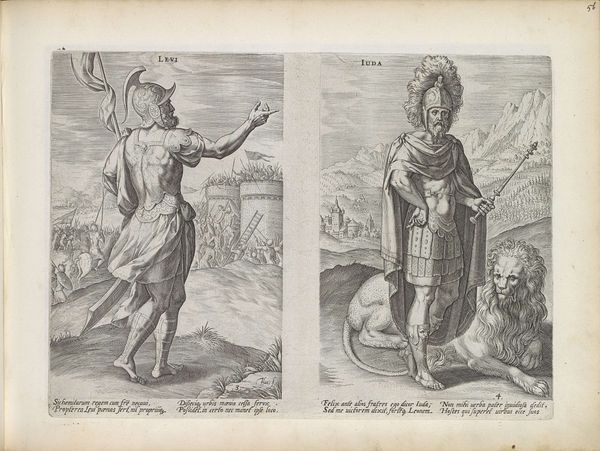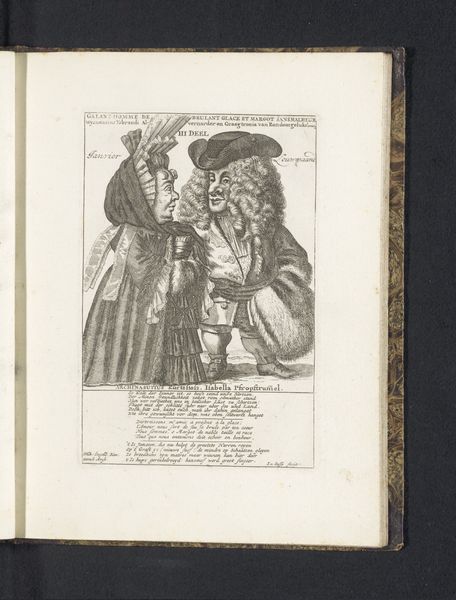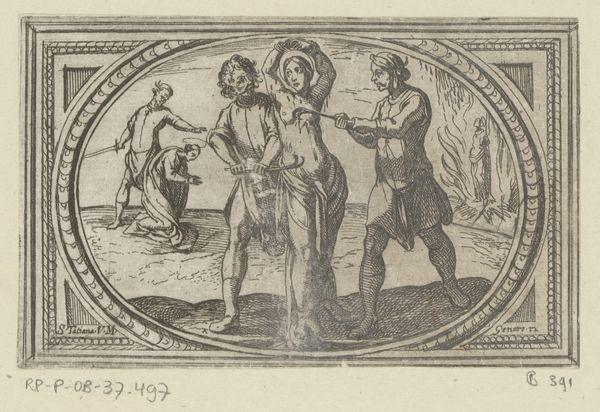
Wanneer de haan zig vraatig voedt; de spys en drank verteert, / Terwyl de hen klapwiekt en kraait, dan gaat het gantsch verkeerd. / Zo elk zyn' pligt betracht, en op zyn post blyft waaken, / Dan heeft 'er eendragt plaats, en deeze baart vermaaken 1715 - 1813
0:00
0:00
print, engraving
#
narrative-art
#
dutch-golden-age
# print
#
folk-art
#
genre-painting
#
engraving
Dimensions: height 320 mm, width 403 mm
Copyright: Rijks Museum: Open Domain
Editor: This is a rather curious print from between 1715 and 1813 by Gerrit Oortman, housed here at the Rijksmuseum. It seems to be an engraving with some hand coloring added. There's an almost comic tension between the figures, a domestic dispute perhaps? What symbols do you see operating in this piece? Curator: Indeed, it appears to depict a battle of the sexes, visualized through loaded imagery. Notice how the woman in the left panel seems to dominate the scene, hand raised as if in scolding, mirroring the hens above, while the man recoils. These aren't just figures; they represent the perceived roles and tensions within marriage. Editor: So the artist uses those hens to reinforce a message about gender dynamics? Curator: Precisely. Chickens were potent symbols within Dutch visual culture. Consider the inscription: when the rooster gorges while the hen clucks, things go awry. It reflects a social order subverted, where women step out of their prescribed roles. And note how the right panel shows a contrasting vision of harmonious, though still rigid, partnership. The man and woman stand at equal height, reflecting balance and concord within clearly defined, subservient roles. The single bird perched above mirrors a single vision. What do you suppose that implies about their independence? Editor: So, the imagery isn't just decorative; it's a commentary on societal expectations? It feels like the artist had quite a clear point of view on how domestic life *should* be! Curator: Very astute. The "folk art" style makes the print accessible. Its lessons and symbols are meant for all. Engravings such as these weren't just art, they were societal guideposts, outlining accepted codes of behavior and the dangers of straying from them. I see a real commentary on the fears of disrupted order here, don't you think? Editor: Absolutely, a fascinating window into social anxieties of the time! It's amazing how much information is packed into a seemingly simple image, with common visual elements having symbolic heft! Curator: Indeed, visual elements acting as memory cues – triggering cultural narratives about men, women, and their ‘rightful’ places in the home, but in this case, for us, sparking new discussions.
Comments
No comments
Be the first to comment and join the conversation on the ultimate creative platform.
